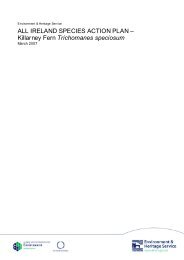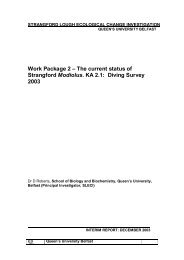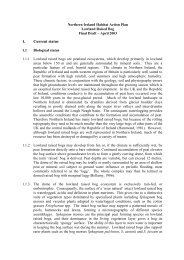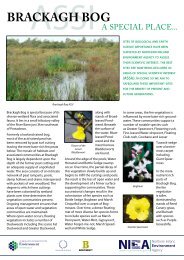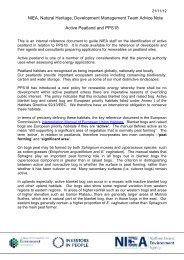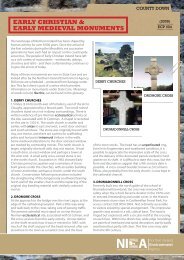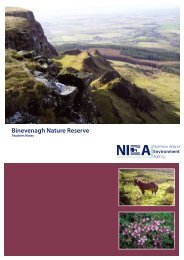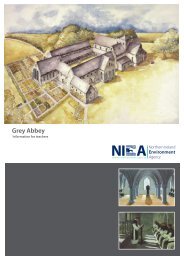Municipal Waste Data Monitoring and Reporting: Interim Guidelines
Municipal Waste Data Monitoring and Reporting: Interim Guidelines
Municipal Waste Data Monitoring and Reporting: Interim Guidelines
You also want an ePaper? Increase the reach of your titles
YUMPU automatically turns print PDFs into web optimized ePapers that Google loves.
This Annex contains a list of the waste management terms that have been used in<br />
this report.<br />
BIODEGRADABLE MUNICIPAL<br />
WASTE<br />
BRING RECYCLING SCHEMES<br />
BULKY HOUSEHOLD WASTE<br />
CAPTURE RATE<br />
CIVIC AMENITY SITES<br />
COMMERCIAL WASTE<br />
COMPOSTED<br />
Any municipal waste that is capable of undergoing anaerobic or<br />
aerobic decomposition, such as food <strong>and</strong> garden waste, <strong>and</strong> paper<br />
<strong>and</strong> paperboard.<br />
Council Directive 1999/31/EEC of 26 April 1999 on the l<strong>and</strong>fill of waste<br />
Facilities where members of the public can bring dry recyclable<br />
materials (e.g. paper, glass, cans, textiles, shoes, etc.) at<br />
supermarkets or other locations, but not civic amenity sites<br />
operated by District Councils.<br />
<strong>Waste</strong> too large <strong>and</strong> cumbersome to be included in ordinary waste<br />
collection. Collected either free of charge or for a small fee.<br />
For kerbside recycling of dry recyclables;<br />
the proportion of a particular material that has been recycled (i.e.<br />
diverted away from disposal routes) as a direct result of the<br />
introduction of a collection scheme, in a particular area.<br />
It is a measure of the efficiency with which householders separate<br />
recyclable materials from their waste. In other words, the<br />
percentage of the available material in the waste that people<br />
participating in a recycling scheme separate for kerbside<br />
collection. For example if there is 10Kg of paper in the waste<br />
stream <strong>and</strong> 5Kg are separated for recycling, this represented a<br />
50% capture rate.<br />
Sites provided <strong>and</strong> operated by District Councils for the public<br />
<strong>and</strong> in some cases businesses to bring waste for recycling <strong>and</strong><br />
disposal.<br />
<strong>Waste</strong> from premises used wholly or mainly for the purposes of a<br />
trade or business or the purposes of sport, recreation or<br />
entertainment, excluding household waste, industrial waste,<br />
waste from any mine or quarry <strong>and</strong> waste from premises used for<br />
agriculture".<br />
The controlled biological decomposition <strong>and</strong> stabilization of<br />
organic of organic substrates, under conditions that are<br />
predominantly aerobic <strong>and</strong> that allow the development of<br />
thermophilic temperatures as a result of biologically produced<br />
heat. It results in a final product (‘compost’) that has been<br />
sanitized <strong>and</strong> stabilized, is high in humic substances <strong>and</strong> can be<br />
used as a soil improver, as an ingredient in growing media, or<br />
blended to produce a topsoil that will meet British St<strong>and</strong>ard BS<br />
3882, incorporating amendment No. 1.<br />
DETR Guidance on <strong>Municipal</strong> <strong>Waste</strong> Management Strategies – 2001



